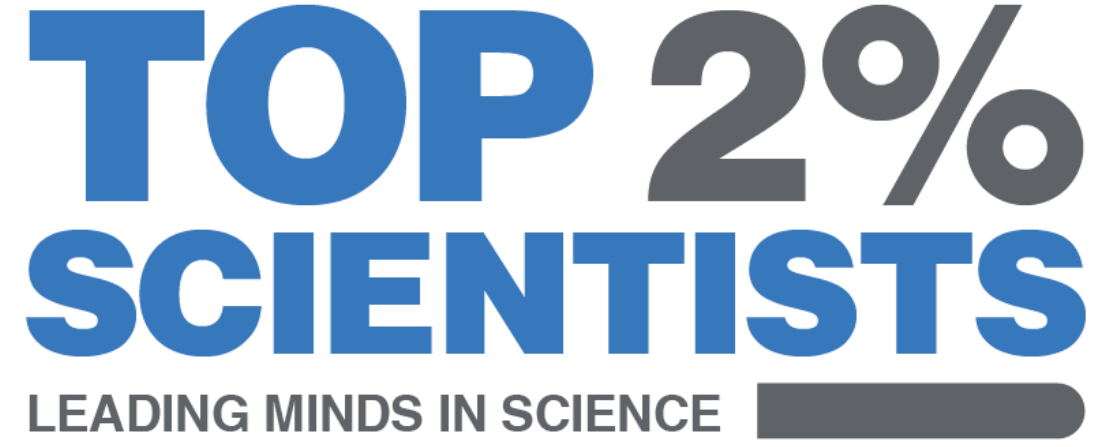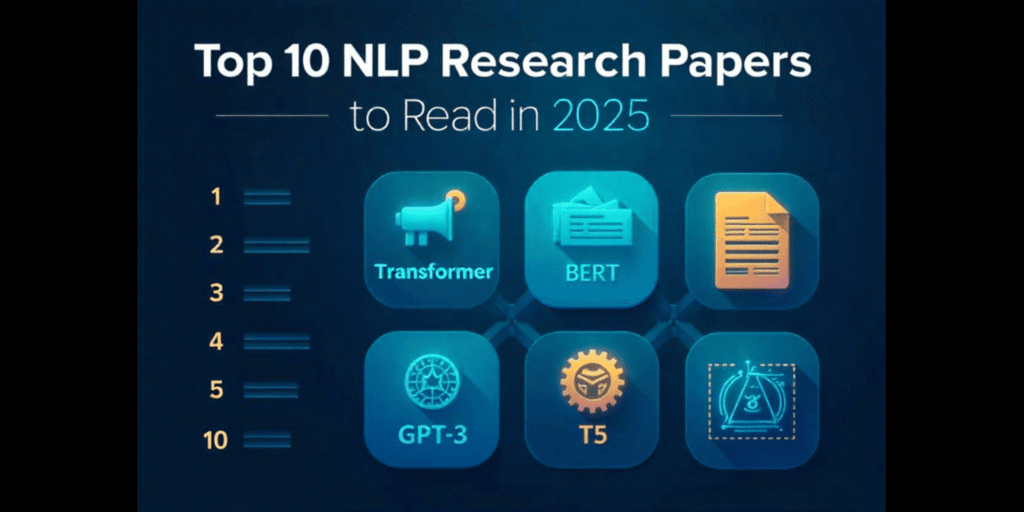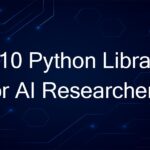Introduction
In the rapidly evolving world of natural language processing, keeping up with the best NLP research papers is essential for researchers and practitioners alike. Breakthroughs such as the Transformer architecture, bidirectional pretraining, and efficient model distillation have not only advanced academic understanding but also driven real‑world applications from chatbots to document summarization. This article delivers a visual, SEO‑friendly guide to the top ten papers you need to read in 2025, complete with timelines, tables, and concise summaries.
Why These Are the Best NLP Research Papers
We selected these ten papers based on four key criteria:
- Citation Impact: High number of references in follow‑on work.
- Technical Novelty: Introduced architectures or training methods that broke new ground.
- Practical Influence: Enabled novel applications or significantly improved efficiency.
- Longevity: Continues to underpin state‑of‑the‑art systems in 2025.
Evolution Timeline of Key NLP Models
timelinetitle Evolution of NLP Models
2017 : Attention Is All You Need
2018 : BERT
2019 : RoBERTa
2019 : XLNet
2019 : DistilBERT
2020 : GPT-3
2020 : T5
2020 : SpanBERT
2020 : ELECTRA
2020 : Longformer
This timeline visualizes how each major contribution builds on its predecessors, leading to ever more powerful and efficient NLP systems.
Top 10 NLP Research Papers at a Glance
| Paper (Year) | Innovation | Impact |
|---|---|---|
| Attention Is All You Need (2017) | Transformer self‑attention | Replaced RNNs across NLP tasks |
| BERT (2018) | Bidirectional masked language modeling | State‑of‑the‑art on 11 benchmarks |
| RoBERTa (2019) | Optimized pretraining recipe | Improved over BERT with more data |
| XLNet (2019) | Permutation‑based pretraining | Outperformed BERT on multiple tasks |
| DistilBERT (2019) | Knowledge distillation for compact models | 40% smaller, 97% performance |
| GPT‑3 (2020) | Few‑shot in‑context learning | Enabled zero‑shot applications |
| T5 (2020) | Unified text‑to‑text framework | One model handles all tasks |
| SpanBERT (2020) | Span‑focused pretraining | Boosted QA and coreference tasks |
| ELECTRA (2020) | Discriminator pretraining | 4× faster, sample‑efficient |
| Longformer (2020) | Efficient attention for long documents | Linear scaling to thousands of tokens |
Deep‑Dive Summaries
1. “Attention Is All You Need” (Vaswani et al., 2017)
- Core Idea: Introduced self‑attention to model dependencies without recurrence.
- Key Benefit: Enables parallelization, greatly speeding up training.
- Use Case: Sequence‑to‑sequence tasks like translation and summarization.
2. “BERT: Pre‑training of Deep Bidirectional Transformers” (Devlin et al., 2018)
- Core Idea: Masked language model pretraining in both directions.
- Key Benefit: Deep bidirectional context yields superior representations.
- Use Case: Fine‑tuning for classification, QA, and NER with minimal task‑specific data.
3. “RoBERTa: A Robustly Optimized BERT Pretraining Approach” (Liu et al., 2019)
- Core Idea: Removed next‑sentence prediction; trained on more data with larger batches.
- Key Benefit: Demonstrates importance of training recipes over new architectures.
- Use Case: Improves baseline BERT performance across benchmarks.
4. “XLNet: Generalized Autoregressive Pretraining for Language Understanding” (Yang et al., 2019)
- Core Idea: Permutation‑based training captures bidirectional context without masking.
- Key Benefit: Outperforms BERT on multiple benchmarks, especially on question answering.
- Use Case: Tasks requiring robust language understanding with limited fine‑tuning data.
5. “DistilBERT: Distilling BERT for Faster and Lighter Models” (Sanh et al., 2019)
- Core Idea: Knowledge distillation transfers knowledge from large to small model.
- Key Benefit: Retains 97% of BERT’s performance with half the parameters.
- Use Case: Deployment on resource‑constrained devices, mobile inference.
6. “GPT‑3: Language Models Are Few‑Shot Learners” (Brown et al., 2020)
- Core Idea: Large autoregressive model performs tasks with minimal examples.
- Key Benefit: Reduces need for fine‑tuning; leverages prompt engineering.
- Use Case: Zero‑shot and few‑shot settings for text generation, translation, and more.
7. “T5: Exploring the Limits of Transfer Learning with a Unified Text‑to‑Text Transformer” (Raffel et al., 2020)
- Core Idea: Cast all NLP tasks into text‑to‑text format under one model.
- Key Benefit: Simplifies multi‑task learning and transfer learning workflows.
- Use Case: Rapid prototyping of new text processing tasks via custom prompts.
8. “SpanBERT: Improving Pre‑training by Representing and Predicting Spans” (Joshi et al., 2020)
- Core Idea: Pretrain on continuous spans instead of individual tokens.
- Key Benefit: Enhances performance on span‑based tasks like QA and coreference resolution.
- Use Case: Applications requiring precise span predictions, such as entity recognition.
9. “ELECTRA: Pre‑training Text Encoders as Discriminators Rather Than Generators” (Clark et al., 2020)
- Core Idea: Train model to distinguish real vs. fake tokens instead of predicting masked tokens.
- Key Benefit: Achieves stronger performance with less compute.
- Use Case: Projects with tight computational budgets seeking high accuracy.
10. “Longformer: The Long‑Document Transformer” (Beltagy et al., 2020)
- Core Idea: Introduced sliding window and global attention for long sequences.
- Key Benefit: Processes thousands of tokens at linear cost.
- Use Case: Document classification, summarization, and retrieval over long texts.
Practical Takeaways
- Master Self‑Attention: Building blocks of all modern NLP models.
- Select Pretraining Wisely: Masked (BERT/RoBERTa), autoregressive (GPT‑3), or discriminative (ELECTRA) approaches each suit different scenarios.
- Optimize for Efficiency: Use DistilBERT or ELECTRA for fast inference.
- Handle Long Contexts: Apply Longformer for tasks requiring extended input lengths.
- Adopt Unified Frameworks: T5’s text‑to‑text paradigm simplifies multi‑task deployment.
How to Stay Updated
- Follow Top Conferences: ACL, EMNLP, NAACL, and NeurIPS.
- Subscribe to Newsletters: “The Batch,” “Import AI,” and “NLP Highlights.”
- Use ArXiv Sanity Preserver: Customizable daily feeds of new papers.
- Join Communities: r/MachineLearning on Reddit, AI/ML Slack workspaces, and LinkedIn groups.
Frequently Asked Questions
Q1. Which paper should I implement first?
Start with “Attention Is All You Need” to understand Transformers, then move to BERT for practical fine‑tuning examples.
Q2. Are there open‑source codebases available?
Yes—Hugging Face’s Transformers library and the AllenNLP toolkit offer easy implementations of these models.
Q3. How do I learn the math behind these papers?
Complement paper reading with courses like Stanford’s CS224n or the MIT Deep Learning series on YouTube.
Q4. What’s the best way to share my insights?
Write blog posts with code snippets, create interactive Jupyter or Colab notebooks, and present findings at local meetups.



